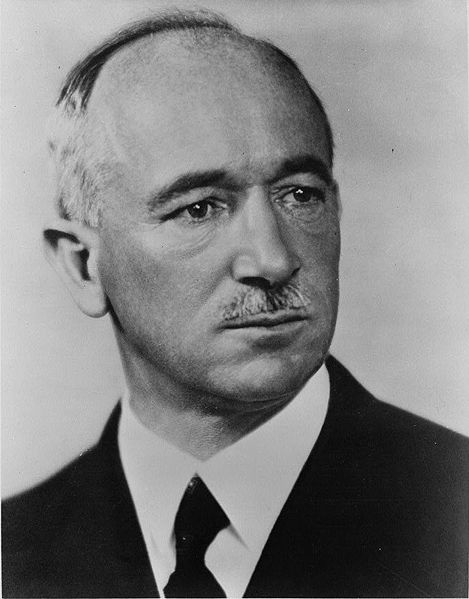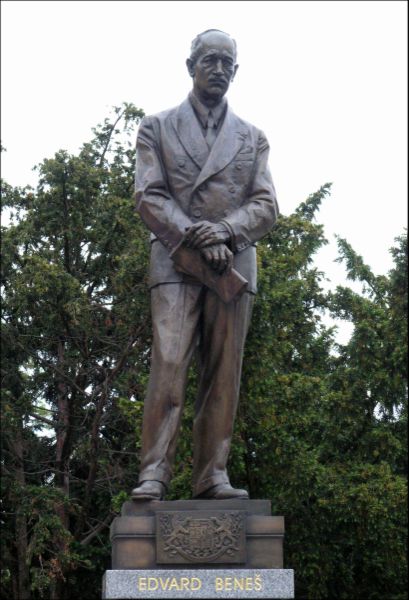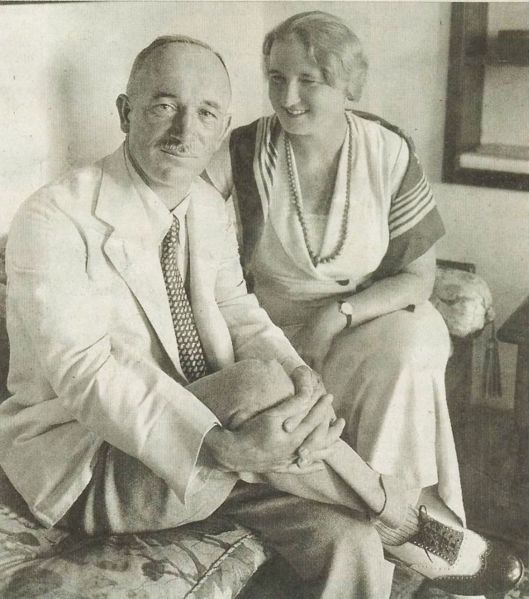<Back to Index>
- Mathematician Jacopo Francesco Riccati, 1676
- Bluesman Aaron Thibeaux (T-Bone) Walker, 1910
- 2nd President of Czechoslovakia Edvard Beneš, 1884
PAGE SPONSOR


Edvard Beneš (28 May 1884 – 3 September 1948) was a leader of the Czechoslovak independence movement, Minister of Foreign Affairs and the second President of Czechoslovakia. He was known to be a skilled diplomat.
Edvard Beneš was born into a peasant family in the small town of Kožlany, Bohemia, ca. 60 km west of Prague. He spent much of his youth in Vinohrady district of Prague, where he attended a grammar school from 1896 to 1904. During this time he played football for Slavia Prague. After studies at the Faculty of Philosophy of the Charles University in Prague, he left for Paris and continued his studies at the Sorbonne and at the Independent School of Political and Social Studies (École Libre des Sciences Politiques). He completed his first degree in Dijon, where he received his Doctorate of Laws in 1908. Then he taught for three years at the Prague Academy of Commerce, and after his habilitation in the field of philosophy in 1912, he became a lecturer in sociology at Charles University. He was involved in Scouting.
During World War I, Beneš was one of the leading organizers of an independent Czechoslovakia abroad. He organized a Czech pro-independence anti-Austrian secret resistance movement called "Maffia". In September, 1915, he went into exile where in Paris he made intricate diplomatic efforts to gain recognition from France and the United Kingdom for the Czechoslovak independence movement, as he was from 1916 – 1918 a Secretary of the Czechoslovak National Council in Paris and Minister of the Interior and of Foreign Affairs within the Provisional Czechoslovak government.
From 1918 – 1935, Beneš was the first and the longest serving Foreign Minister of Czechoslovakia, and from 1920 – 1925 and 1929 – 1935 a member of the Parliament. He represented Czechoslovakia in talks of the Treaty of Versailles. In 1921 he was a professor and also from 1921 – 1922 Prime Minister. Between 1923 – 1927 he was a member of the League of Nations Council (serving as president of its committee from 1927 – 1928). He was a renowned and influential figure at international conferences, such as Genoa 1922, Locarno 1925, The Hague 1930, and Lausanne in 1932.
Beneš was a member of the Czechoslovak National Socialist Party (until 1925 called Czechoslovak Socialist Party) and a strong Czechoslovakist - he did not consider Slovaks and Czechs to be separate ethnicities.
In 1935, Beneš succeeded Tomáš Garrigue Masaryk as President. He opposed Nazi Germany's claim to the German-speaking so-called Sudetenland in 1938. In October, the Sudeten Crisis brought Europe on the brink of war, which was averted only as France and Great Britain signed the Munich Agreement, which allowed for the immediate annexation and military occupation of the Sudetenland by Germany.
After
this event, which proceeded without Czechoslovakian participation,
Beneš was forced to resign on 5 October 1938 under German pressure and Emil Hácha was
chosen as President. In March 1939, Hàcha's government was
bullied into authorising the German occupation of the remaining
territory of Czechia. (Slovakia had declared its independence by then.) On 22 October 1938 Beneš went into exile in Putney, London. In November 1940 in the wake of London Blitz, Beneš, his wife, their nieces, and his household staff moved to The Abbey at Aston Abbotts near Aylesbury in Buckinghamshire.
The staff of his private office, including his Secretary Edvard
Táborský and his chief of staff Jaromír
Smutný, moved to The Old Manor House in the neighbouring village
of Wingrave, while his military intelligence staff headed by František Moravec was stationed in the nearby village of Addington. In 1940 he organized the Czechoslovak Government-in-Exile in London with Jan Šrámek as Prime Minister and himself as President. In 1941 Beneš and František Moravec planned Operation Anthropoid, with the intention of assassinating Reinhard Heydrich. This
was implemented in 1942, and resulted in brutal German reprisals such
as the execution of thousands of Czechs and the eradication of two
villages of Lidice and Ležáky. Although
not a Communist, Beneš was also on friendly terms with Stalin. In 1943
he signed the entente between Czechoslovakia and the Soviet Union. According to British writer Nigel West's book on the Venona project, Edvard Beneš was Soviet source codename "19". Identity of Soviet source codename "19" is unclear. Military historian Eduard Mark and American authors Herbert Romerstein and Eric Breindel concluded that source codename "19" was Roosevelt's aide Harry Hopkins. According to American authors John Earl Haynes and Harvey Klehr source codename "19" could be someone from the British delegation at the Washington Conference in May 1943. After the Prague uprising at the end of World War II,
Beneš returned home and reassumed his former position as President. He
was unanimously confirmed as the president of the republic by the
National Assembly on 28 October 1945. Under article 58.5 of the
Constitution, "The former president shall stay in his or her function
till the new president shall be elected." On 19 June 1946 Beneš was
formally elected to his second term as President. The Beneš decrees (officially called "Decrees of the President of the Republic"), among other things, expropriated citizens of German and Hungarian ethnicity,
and paved the way for the eventual expulsion of the majority of Germans
to West and East Germany and Austria. The decrees are still in force to
this day and remain controversial, with the expellees demanding their
repeal. The Czech government's repeated assurances that the decrees are
no longer applied have been accepted by the European Commission and the European Parliament. Beneš presided over a coalition government involving Democrats and Communists, with the Communist leader Klement Gottwald as prime minister. On 25 February 1948, the Communists assumed complete power in a coup d'état. Beneš resigned as President on 7 June 1948 and Gottwald succeeded him as President. Beneš died of natural causes at his villa in Sezimovo Ústí, Czechoslovakia on 3 September 1948. He is interred along with his wife in the garden of his villa and his bust is part of the gravestone.
